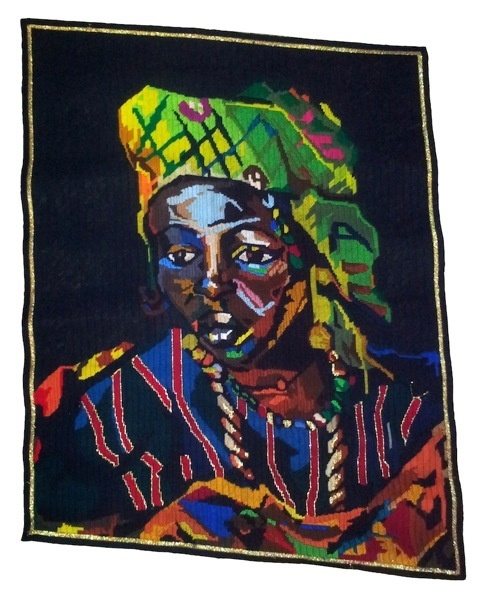Athi-Patra Ruga

Dakar Woman belongs to a series of Ruga’s early tapestries, each based on a painting by the mid-century South African artist Irma Stern. Translating her images from oil to thread, Ruga reclaims Stern’s portraits of exoticised subjects. His is a gesture of re-appropriation, shifting an image from a colonial frame to a contemporary South African context. Removing the work from its historical canvas, Ruga not only invites the viewer to see the same image anew but welcomes the pictured figure into his narrative practice. That is, he welcomes the Dakar Woman into his Azania, a kingdom ruled – in the artist’s words – by “a pantheon of ladies.”
b.1984, Mthatha
Athi-Patra Ruga is an artist of baroque excess. Embellishments and high-gloss finishes characterise much of his work across mediums, be it photographic, performative or sculptural. The petit point tapestries for which he is perhaps best known are rich in colour and detail, sensual in their tactile materiality and bold in their imagery. Such is the artist’s vision of Azania, an African utopia of imagined abundance and indulgence. Ruga’s opulent – even flamboyant – practice centres on the allure of this lost paradise. It proves a compelling counterpoint with which to critique South Africa’s broken ‘rainbow nation’ promise. Ruga, who studied fashion, is particularly attuned to the agendas of aesthetic expression. “With my work,” he says, “I want to create new mythologies and stories to disrupt the body national – I want to disrupt elements of taste, especially when taste is used nationalistically.” Hidden beneath the visual decadence of Ruga's practice is the more serious weight of social criticism.